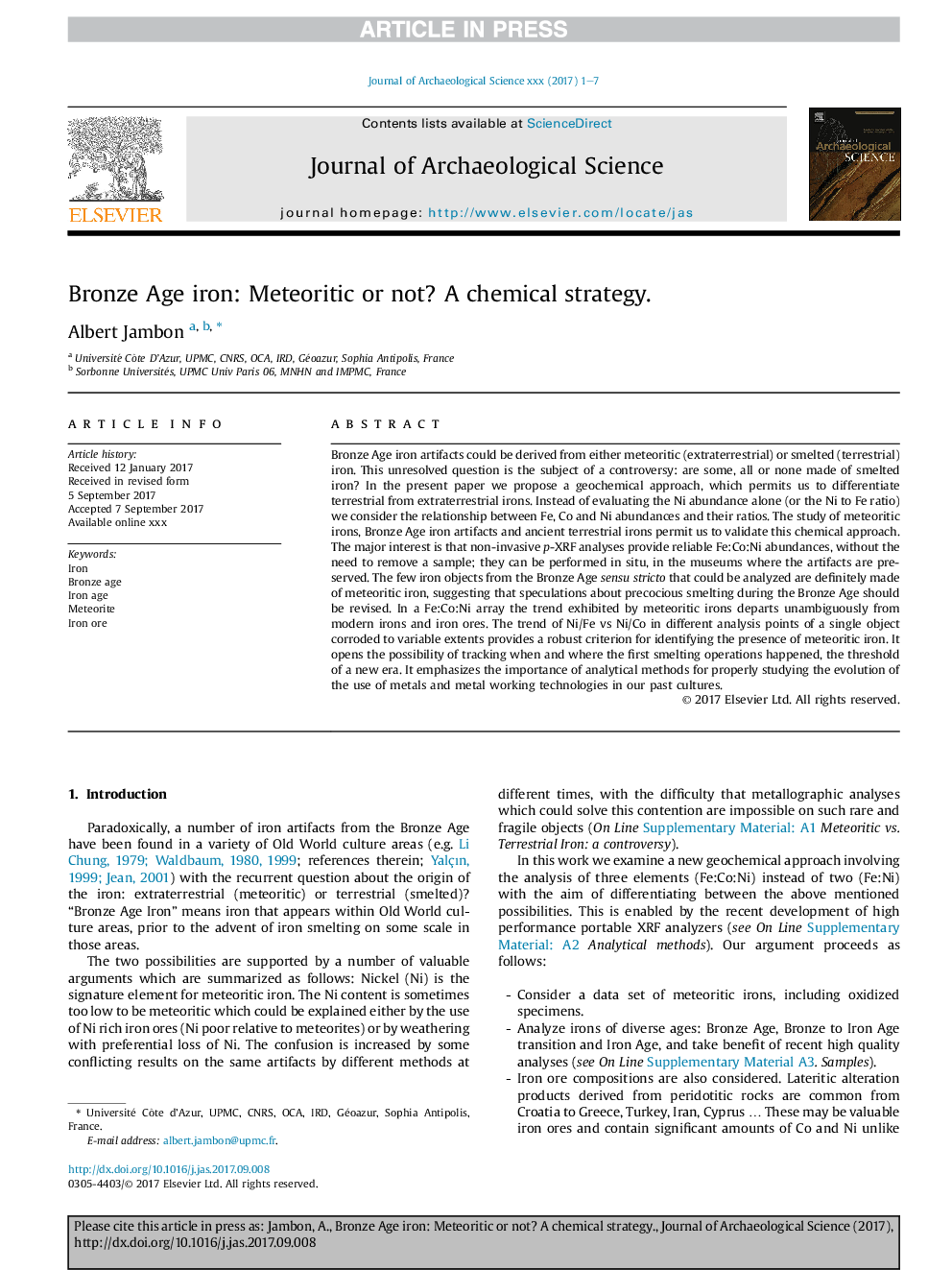| کد مقاله | کد نشریه | سال انتشار | مقاله انگلیسی | نسخه تمام متن |
|---|---|---|---|---|
| 7441136 | 1483872 | 2017 | 7 صفحه PDF | دانلود رایگان |
عنوان انگلیسی مقاله ISI
Bronze Age iron: Meteoritic or not? A chemical strategy.
ترجمه فارسی عنوان
برنز سن آهن: متئوریک یا نه؟ استراتژی شیمیایی
دانلود مقاله + سفارش ترجمه
دانلود مقاله ISI انگلیسی
رایگان برای ایرانیان
کلمات کلیدی
اهن، سن برنز، عصر آهن، شهاب سنگ، سنگ آهن،
موضوعات مرتبط
مهندسی و علوم پایه
مهندسی مواد
دانش مواد (عمومی)
چکیده انگلیسی
Bronze Age iron artifacts could be derived from either meteoritic (extraterrestrial) or smelted (terrestrial) iron. This unresolved question is the subject of a controversy: are some, all or none made of smelted iron? In the present paper we propose a geochemical approach, which permits us to differentiate terrestrial from extraterrestrial irons. Instead of evaluating the Ni abundance alone (or the Ni to Fe ratio) we consider the relationship between Fe, Co and Ni abundances and their ratios. The study of meteoritic irons, Bronze Age iron artifacts and ancient terrestrial irons permit us to validate this chemical approach. The major interest is that non-invasive p-XRF analyses provide reliable Fe:Co:Ni abundances, without the need to remove a sample; they can be performed in situ, in the museums where the artifacts are preserved. The few iron objects from the Bronze Age sensu stricto that could be analyzed are definitely made of meteoritic iron, suggesting that speculations about precocious smelting during the Bronze Age should be revised. In a Fe:Co:Ni array the trend exhibited by meteoritic irons departs unambiguously from modern irons and iron ores. The trend of Ni/Fe vs Ni/Co in different analysis points of a single object corroded to variable extents provides a robust criterion for identifying the presence of meteoritic iron. It opens the possibility of tracking when and where the first smelting operations happened, the threshold of a new era. It emphasizes the importance of analytical methods for properly studying the evolution of the use of metals and metal working technologies in our past cultures.
ناشر
Database: Elsevier - ScienceDirect (ساینس دایرکت)
Journal: Journal of Archaeological Science - Volume 88, December 2017, Pages 47-53
Journal: Journal of Archaeological Science - Volume 88, December 2017, Pages 47-53
نویسندگان
Albert Jambon,
